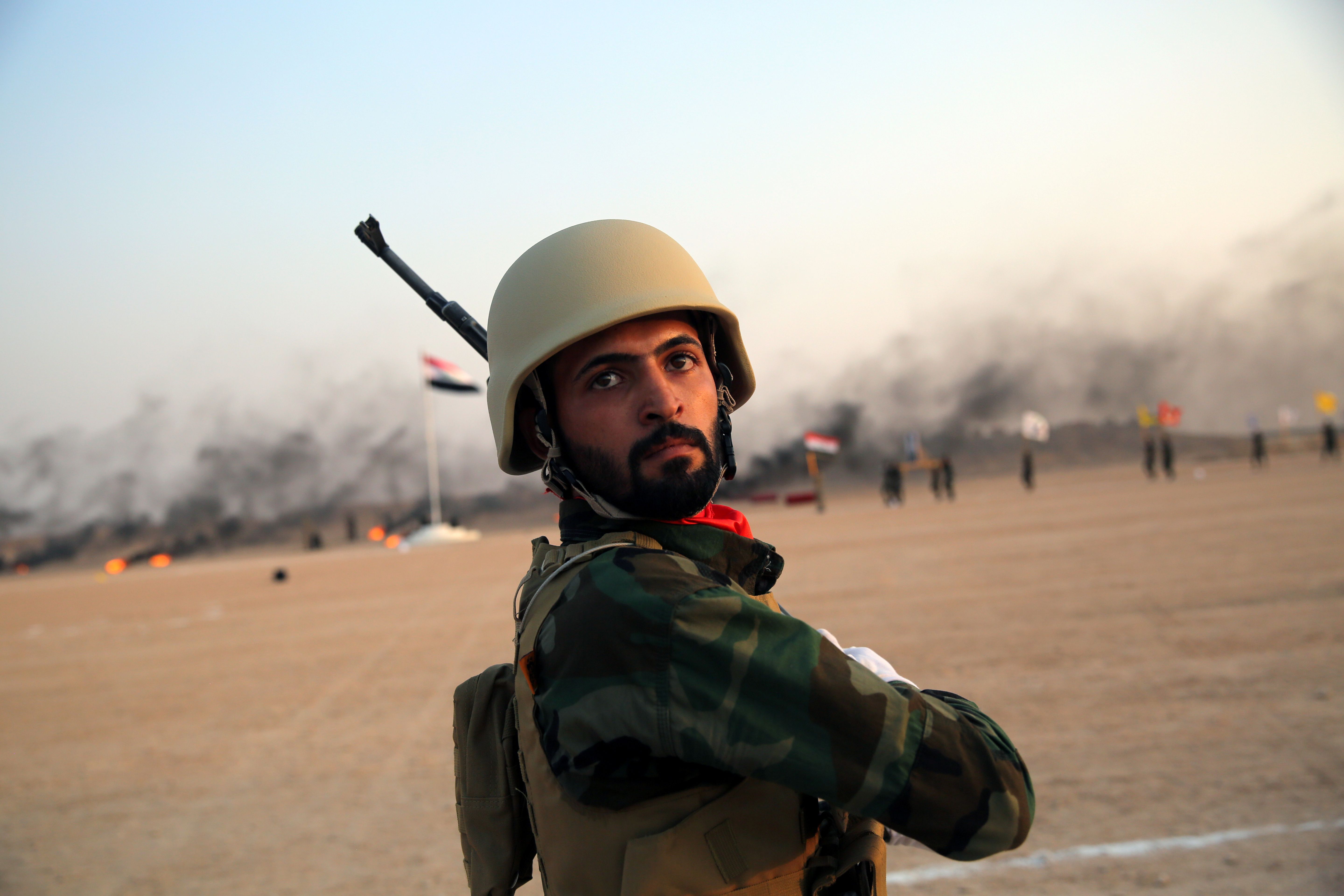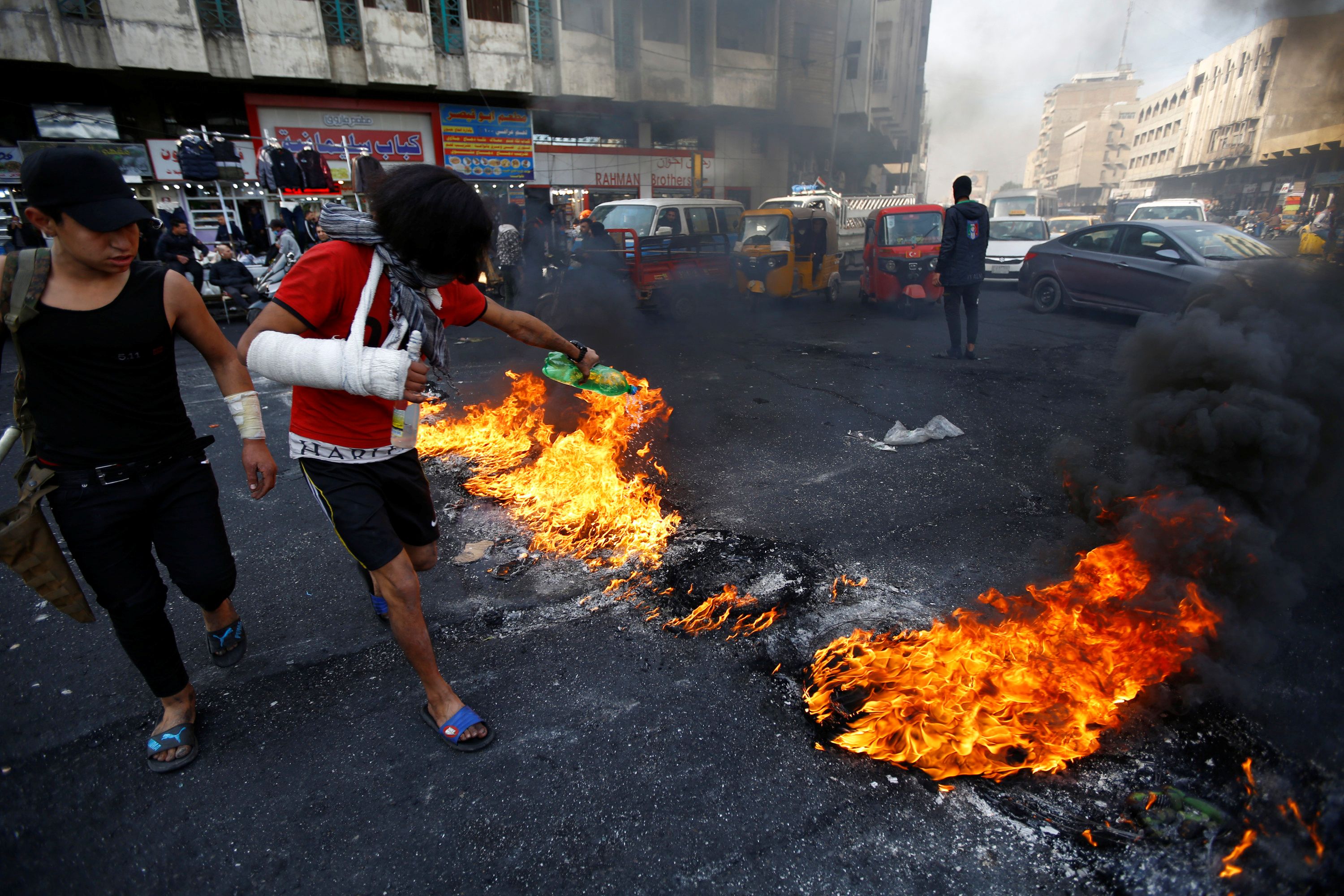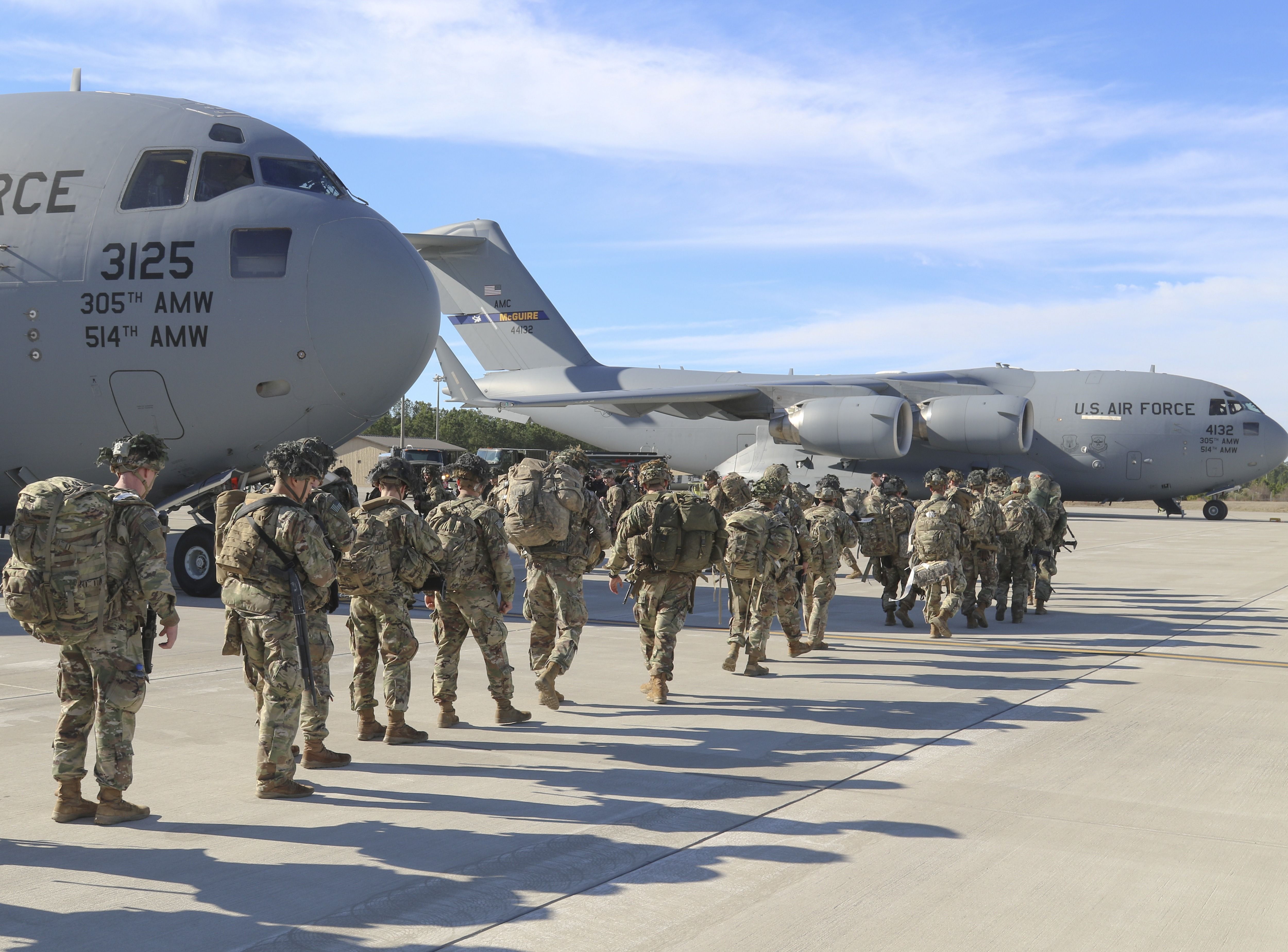The Role of Popular Mobilisation Forces in Iraqi Politics

PMF—Establishment and Structure
The PMF was formed in 2014 after Ali al-Sistani, the highest Iraqi Shiite cleric, called on all the faithful to fight the so-called Islamic State (ISIS). However, the poor condition of the Iraqi army and lack of trust in the authorities meant that these volunteers, instead of joining the national army, chose to fight for the existing militias or created new ones. According to the Iraqi constitution the operation of paramilitary groups is illegal, so the government tagged the PMF as a separate structure within Iraq’s security forces. Officially, the PMF head commander reports to the prime minister, but the militias represent various interests and ethno-religious groups, which makes it difficult for the authorities to control the entire organisation.
The PMF includes Shiite militias associated with the Iranian Revolutionary Guards (Al-Quds), whose military support is key to their activities. Among them are the Badr Brigades formed in 1983, Asaib Ahl al-Haq (AAH), founded in 2006, and Kataib Hezbollah (KH) active since 2003. These militias number about 50,000 fighters. Groups that are close to Sistani constitute another important part of the PMF. They were trained and equipped by the Iraqi security forces and favour including their troops in the regular army. These groups are directly supervised by religious institutions that do not maintain close relations with the Iranian forces. The number of fighters in this grouping is about 20,000-25,000. The PMF also includes fighters who were present in the country in 2003 (the Iraq War) and associated with the cleric and politician Muqtada al‑Sadr, along with militias representing ethnic and religious minorities (e.g., Turkmen, Yezidi), Sunni tribes, or the pro-democratic Al-Furat Brigade, which includes former Syrian rebels. According to the 2019 national budget, 128,000 PMF militants are on the state payroll (for comparison, the Iraqi army has about 65,000 soldiers), although foreign experts estimate the number of PMF at 80,000–100,000.
Internal Context
Although their participation in the fight against ISIS increased public support for the militias—in, 2011, just 11.5% of Iraqis stated that these groups play a positive role in state security, but by 2017, this had jumped to 64.5% of Iraqis in Sunni regions and 91% of Iraqi Shiites—the protests that erupted in the country in October 2019 have led to a quick decline. This is because of the anti-Iran nature of the demonstrations and accusations that PMF groups pursue Iran’s interests over Iraq’s. In addition, militias participated in the brutal pacification of the protests, during which about 700 people were killed.
The political crisis in Iraq and the assassination of former PMF commander Abu Mahdi al-Muhandis in the U.S. attack on 3 January (which also killed Iranian Gen. Qasem Soleimani) highlighted the divisions within the PMF. Abd al-Aziz al-Muhammadawi was nominated as the new commander. This choice was backed by militias supported by Iran but was, in turn, criticised by members of militias associated with Sistani and the al-Furat brigade, who argue that the appointment of a new commander is unlawful in the current Iraqi political situation (Prime Minister Adil Abd al-Mahdi resigned in November last year in light of the protests). The appointment on 9 April of Prime Minister Mustafa al-Kadhimi (the third PM since Mahdi’s resignation) faced criticism from militia leaders associated with Al-Quds, who threatened to “start a war against Iraqis” and accused the Shiite parties of succumbing to American pressure. In turn, commanders of Kataib al-Imam Ali, a PMF grouping connected to al-Sadr, issued a statement supporting the authorities’ decision.
The Iraqi government has conditioned the PMF’s activities on not engaging in politics. Despite this, the two largest coalitions in parliament are associated with PMF factions (Sairun with al-Sadr, and Fatah with the KH, AAH, and Badr militias), which was key to approving $2.16 billion from the 2019 budget for the PMF (an increase of about $400 million compared to 2018 despite the announcement that ISIS had been defeated in 2017). Commanders of Fatah-aligned militias want to introduce Iranian government doctrine, according to which the religious leader has power over the state authorities. These militias also are accused of having committed human rights violations and war crimes in Tikrit and al-Dur in 2015, according to Human Rights Watch.
International Context
The actions of the PMF groups close to Iran are part of the country’s policy forcing the withdrawal of the U.S. from Iraq. In March, in the aftermath of the U.S. assassination of Soleimani and Muhandis, attacks by pro-Iranian militias on bases hosting American soldiers (in one of which a British and two American soldiers were killed), and subsequent American air raids on KH bases (in which three Iraqi soldiers, two policemen, and a civilian were killed) intensified. Another consequence of the assassination, seen as the unlawful use of Iraqi territory by the U.S. as part of the current administration’s policy of “maximum pressure” on Iran, was the Iraqi parliament’s resolution demanding the withdrawal of foreign troops from Iraq. Although the resolution was non-binding, American soldiers left Al-Qayyarah bases in Qa’im and Kirkuk, handing them over to the Iraqi Ministry of Defence. However, due to the weakness of the Iraqi security forces, the local community is concerned that the withdrawal of foreign soldiers will lead to increased activity by remnant ISIS and PMF militias. The base in Qa'im is particularly at risk, as it lies on the border with Syria, behind which the Syrian city of Abu Kamal is under the control of Iraqi pro-Iranian militias supporting Syrian President Bashar al-Assad. Taking over control of Iraq’s border territories would facilitate direct contact between Iran and its allies in Syria and Lebanon, strengthening the “axis of resistance”—an alliance of states and non-state actors trying to counter the influence of the U.S. and Israel in the Middle East.
Other PMF groups criticise the links both with Iran and the U.S. Shiite clergy overseeing militias close to Sistani banned them from working alongside other states’ armies or participating in foreign conflicts, and al-Sadr calls on the Iraqi government to limit Iranian and American influence in Iraq.
Conclusions
PMF actions contradictory to the policy of the authorities reveal the government’s lack of control over these branches, despite being included in the structure of the state security forces. Therefore, they have become an institution unto themselves, pursuing foreign interests at the expense of Iraq’s and able to pressure the authorities through their internal and external influence network. The non-subordination of the PMF deepens the destabilisation of Iraq and hinders the resolution of the political crisis, which could end in social unrest. The brutal suppression of the recent protests by PMF fighters emphasizes that the actions of some militias are directed at pursuing Iranian interests, especially in light of the criticism of the demonstration by Iranian Supreme Leader Ali Khamenei.
Strengthening the Iraqi state and implementing different strategies for the various PMF branches comprise the key to regaining control over these militias. They could be brought into cooperation with the NATO forces that conduct training missions in Iraq. Kadhimi’s nomination to the post of prime minister may strengthen relations between the Iraqi security forces and NATO in light of his good relations with various ethnic and religious groups in Iraq and the experience of cooperation with the Global Coalition Against Daesh (ISIS). Fighters in factions associated with Sistani might be included in the army structure, creating a counterweight to the military groups close to Iran. Together with NATO, the Iraqi army could create a training programme encouraging other fighters to integrate directly into the regular army.
It also would be beneficial to encourage PMF members to disarm by creating a programme of reintegration into civil society. Ensuring employment for former fighters, such as participation in rebuilding Iraq, would not only be an incentive to step away from the militia but could also help in the reconciliation process between Sunni groups living in the region that were nearly destroyed during the war with ISIS . The EU could include an initiative like this in its support programme for Iraq, a country to which it has already transferred €729 million since 2015. This is particularly important in light of the tensions between these religious groups, ongoing for decades and resulting in regular outbreaks of violence (e.g., in 2006–2009).





